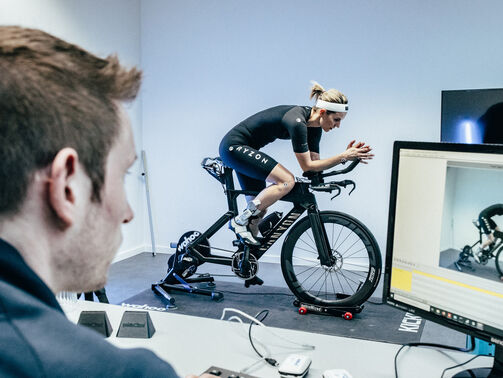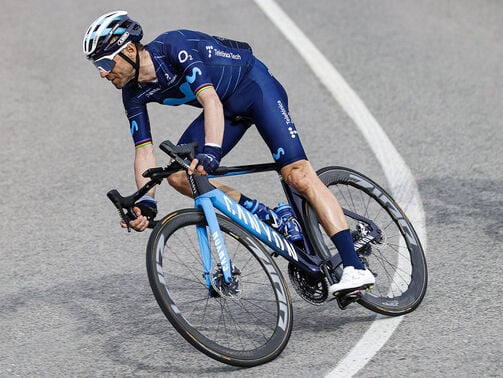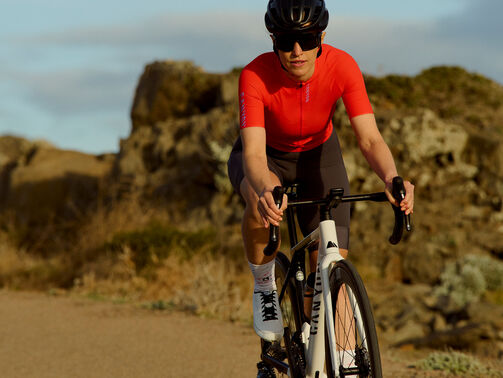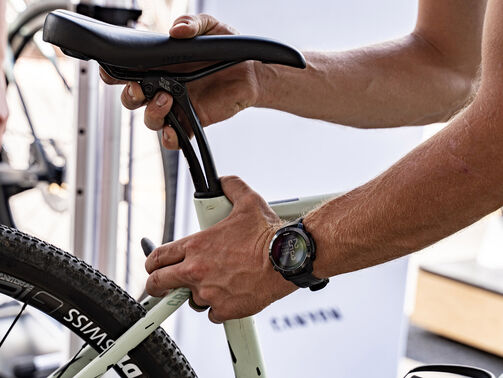Road bike geometry explained: what is it and why is it important?
Discover why the angle and length measurements displayed on bike geometry charts are important for finding your perfect bike.


A road bike’s geometry defines its design and how it rides. Geometry tables for road bikes contain numbers that correspond to measurements on the bike.
In this article we'll cover the basics of road bike geometry as well as some measurements you should for on specific bikes.
What does bike geometry mean and why is it important?
A bike's geometry tells you the size of the bike and its various components and also how it's likely to handle when you're out riding.
On one end of the spectrum, you have racing bikes. Often described as aggressive, they're twitchy and highly responsive. Your position on a racing bike will be lower and longer, which can challenge your flexibility and comfort over longer distances.
The tubes used to build racing bikes are often aerodynamic and they're designed to be stiff, so that power transfer is high. Put simply, these bikes are designed to be fast, efficient and first over the line.
At the other end of the spectrum are endurance road bikes. With their slightly more upright, relaxed riding position, they’re smooth and comfortable on longer rides. Though you'll still be able to chase your friends around the lanes, an endurance bike is less aerodynamic and the bike won't be quite as responsive as a racing bike.
How does frame size affect geometry?
Bigger frames handle differently to smaller frames. There are also a number of subtle effects that frame size has on geometry.
A smaller bike frame does not leave much room for wheels. For this reason, we spec our smaller framed bikes with smaller wheels to avoid toe overlap (your foot rubbing on the front wheel and tyre when turning), create more balanced weight distribution and agile handling, and to maintain steering behaviour to larger bikes with 700C wheels. You'll find 650b wheels on our road bikes and gravel bikes.
Due to longer tubes, a bigger bike frame is (all other things being equal) slightly less rigid than a smaller frame. This isn’t necessarily a bad thing: some riders want a little bit more flex in their frames for increased comfort, while others prefer a stiffer frame for maximum power transfer.
Finding the right size using effective stack and reach
The two most important numbers on any bike's geometry chart are stack and reach. Sizing between bike models and manufacturers can differ despite two bikes being the same size. A medium Canyon Aeroad will feel different to a medium Canyon Endurace because their stack and reach are different.
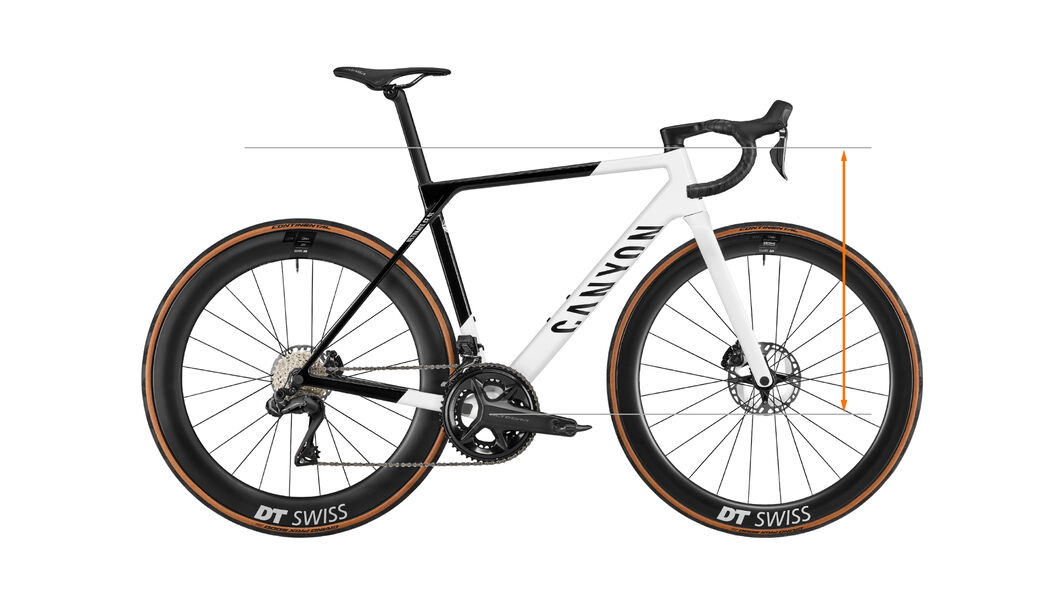
Stack is the vertical height from the bottom bracket to the top of the head tube. If the reach stays the same, a bigger stack number means a more upright riding position.

Reach is the horizontal distance between the centre of the bottom bracket and the head tube. For the same stack number, an increased reach means a longer riding position meaning your hands will move further forward.
Stack and reach can give you a good indication of your riding position but it's not always that simple. Reach is useful if you are comparing similar bikes (two road bikes for example). A lot of modern bikes have longer reach measurements but shorter stems. This gives more control over the front of the bike and is popular on mountain and gravel bikes. Longer reach measurements also means the wheelbase is longer. This makes the bike feel more stable at high speeds.
A professional bike fit will tell you your optimum stack and reach numbers, or you can use your previous bike's measurements and tweak them as needed. When shopping for a new bike, look for stack and reach measurements as close to your desired numbers as possible.
Effective stack and reach
We've gone one step further with our geometry charts to provide a measurement that translates more accurately into real world feel. These effective stack and reach numbers are calculated based on the hand position when gripping the hoods.
Effective Stack is the vertical height between the bottom bracket and point where you grip the hood.
Effective Reach is the horizontal distance from the bottom bracket to the point where you grip the hoods.
These measurements take into account the stem length and shape of the cockpit, plus the spacers fitted as delivered. The riding position on a Canyon Grail is more upright (greater stack) than on a Canyon Aeroad due to the headset spacers.
Common geometry measurements and why they're important
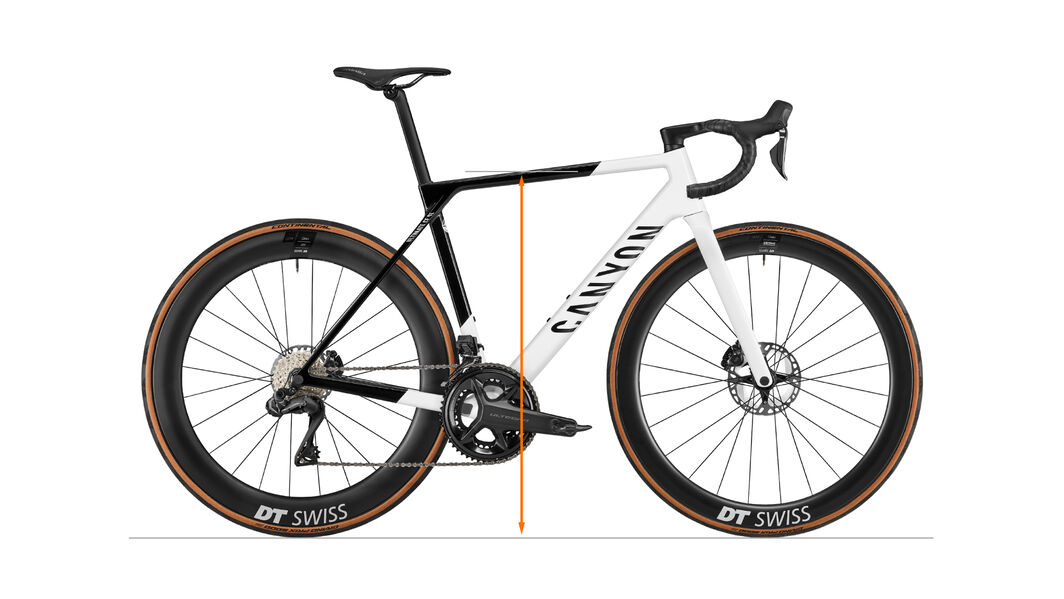
Standover height
By measuring from the midpoint of the top tube to the ground, you'll get a standover height. It's an important measurement when considering your ideal bike size. You need to be able to put two feet on the ground when you're not in the saddle. If you have short legs relative to your overall height, you may want to pay more attention to this number.
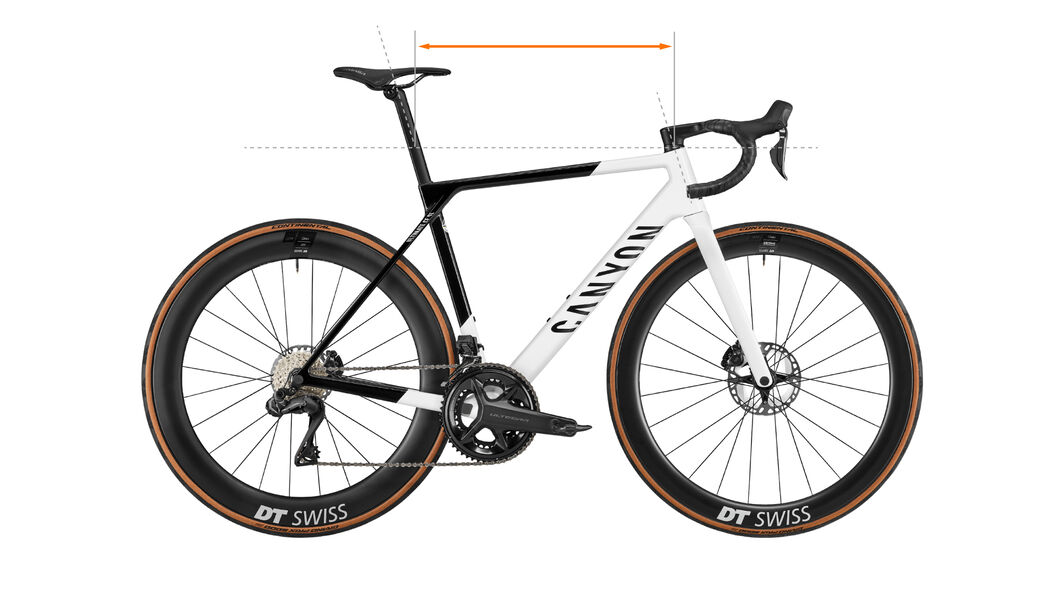
Top tube length
Top tube length is related to the reach of a bike. Bike manufacturers who use numbers for their sizes often quote the top tube length.
Too long a top tube means you'll be stretched out too far. Too short a top tube and you'll be cramped up on the bike with your knees hitting your elbows.
A racing bike like the Canyon Aeroad has a longer reach than an endurance bike like the Canyon Endurace. This forces the rider into a lower and more stretched out, aggressive racing position.
Depending on what cockpit you’re using, if you're between sizes, you can hone the effective reach either by fitting an aftermarket cockpit, using a different length stem, or switching out your drops.
Using the top tube length as an indicator of seating position is somewhat outdated and has been replaced by effective stack and reach. This is because most modern bikes rarely have a horizontal top tube.
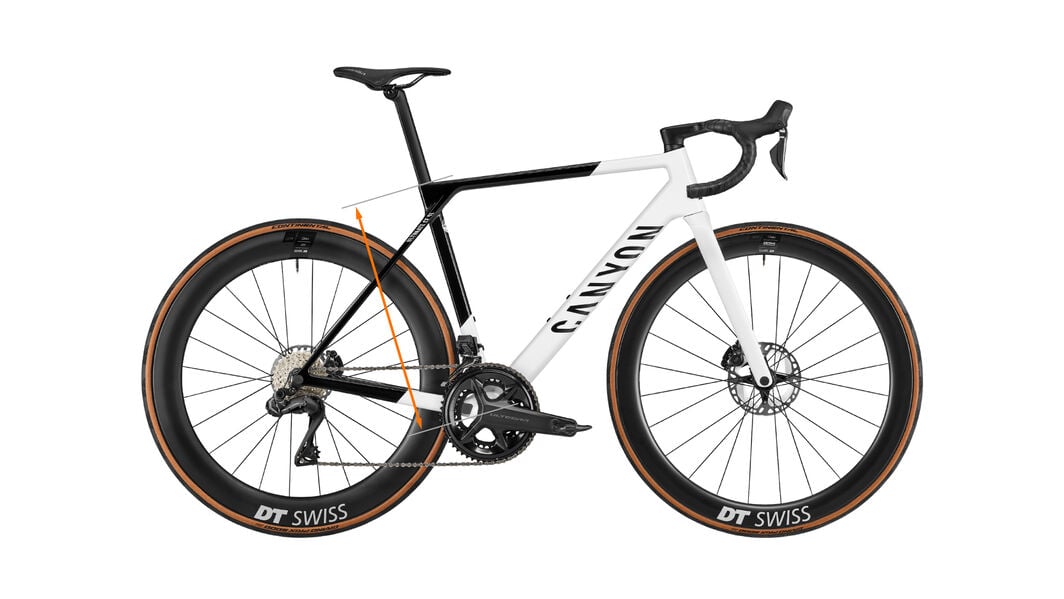
Seat tube length
Seat tube length used to be the primary indicator of frame size as it directly correlates to leg length. Innovative frame shapes such as sloping top tubes have put paid to that but there is still some benefit to this measurement.
Seat tube length indicates how much of your seat post will be exposed when you set the bike up. Bikes with very little seatpost exposed will generally feel stiffer to ride. Bikes with a lot of seatpost exposure will flex a little more and be more comfortable to ride.
The VCLS seatpost helps increase comfort especially if your bike has a lot of exposed seatpost. While it is made of carbon, its unique construction adds flexibility to keep you comfortable whether on road or gravel.
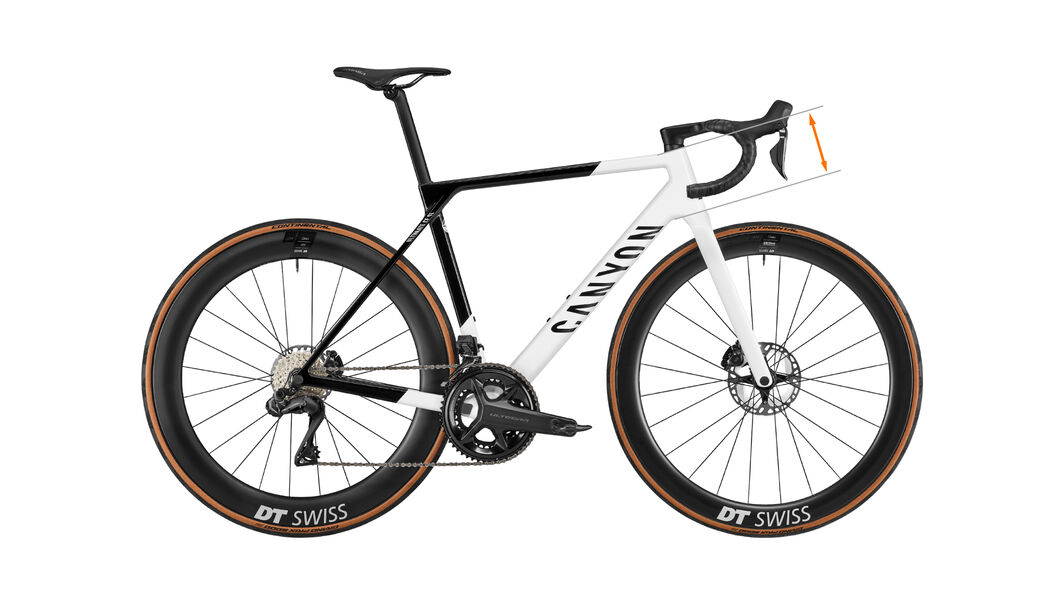
Head tube length
The head tube length is a measurement that feeds into the stack measurement. A shorter head tube (like those seen on racing bikes) means a lower position on the bike. Your handlebars will sit lower down if you don't use any spacers. For bikes without suspension forks a longer head tube will usually mean a more upright seating position.
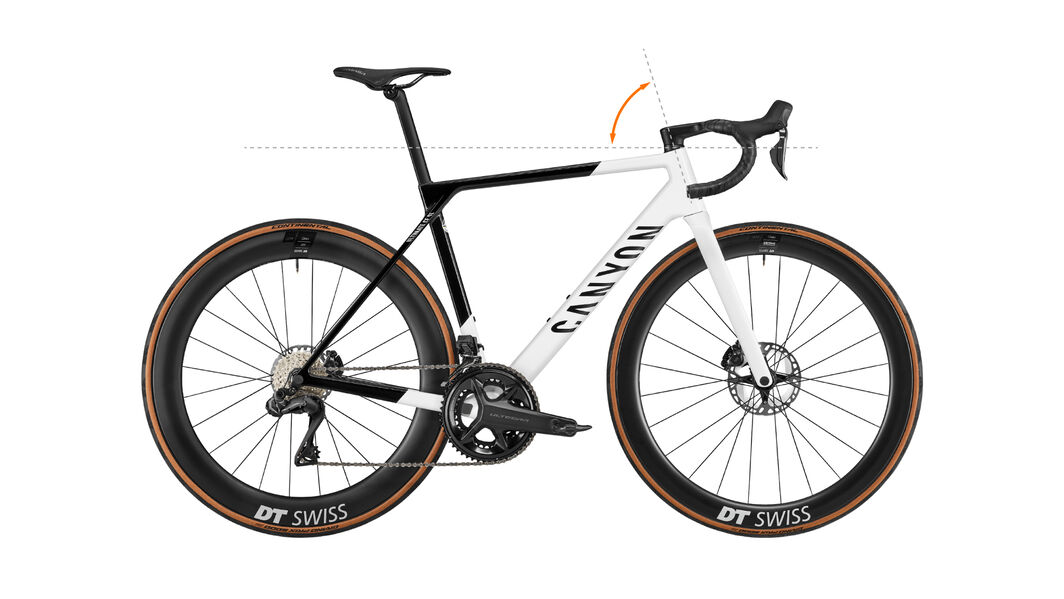
Head tube angle
In order to determine a bike's stability, you need to know the head tube angle. This is the angle at which the front wheel sits relative to your head tube.
If the front wheel of a bike is further forward (often referred to as slacker) then the wheelbase will be longer, and the bike will usually be much more stable at high speeds.
This measurement is one of the more important aspects of mountain bike geometry.
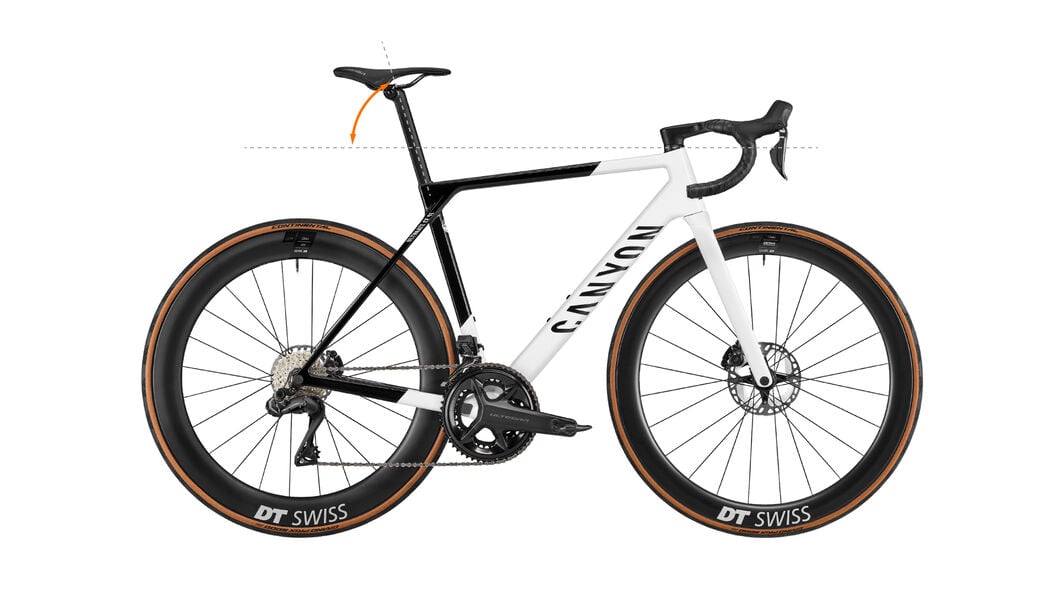
Seat tube angle
The seat tube angle is measured from the horizontal to the tube. The angle dictates the degree to which you ride over the pedals and bottom bracket.
A steeper seat tube angle means you ride more over the pedals.
Riding more directly over the pedals is generally favoured by road racers, time triallists and triathletes. It encourages a lower position on the bike and prevents stress on the thigh muscles over long periods.
Canyon road and gravel bikes use a balanced seat angle of 73.5°, which puts you in a balanced position in the centre of the bike – great both on the flats and on climbs. In contrast, the Canyon Speedmax triathlon bike has an extremely steep 80.5° seat angle to put you in a very aggressive aero position over or almost in front of the bottom bracket.
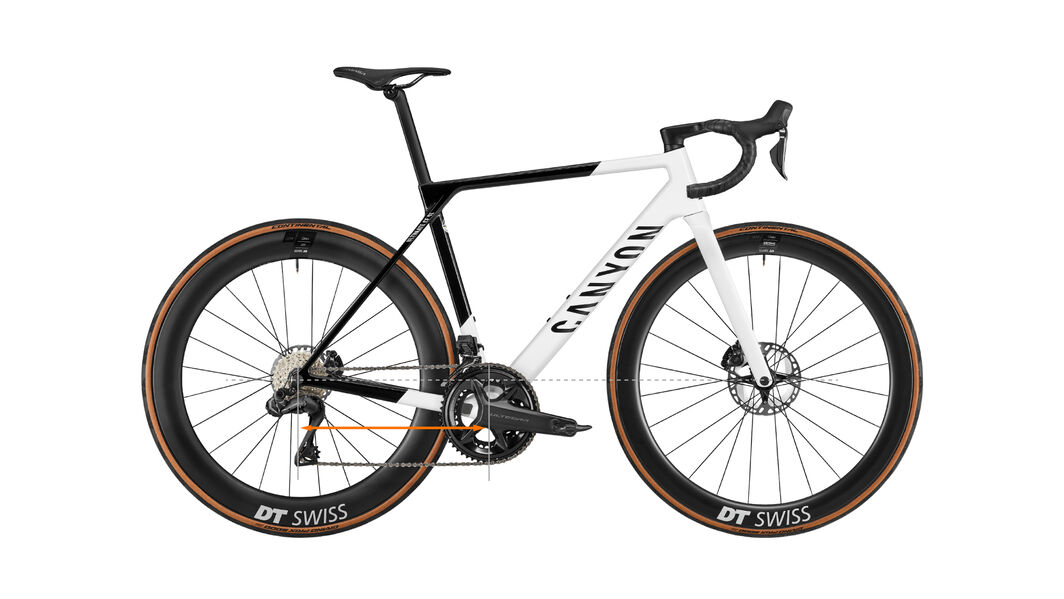
Chainstay length
Chainstay length is closely linked to the overall wheelbase (below) of a bike. Traditionally, race bikes featured shorter chainstays to keep their handling agile and reactive. The trend of wider tyres (for example 28 mm+) has paved the way for longer chainstays. It's up to the bike designers and engineers to find the perfect balance between comfort, versatility and agility.
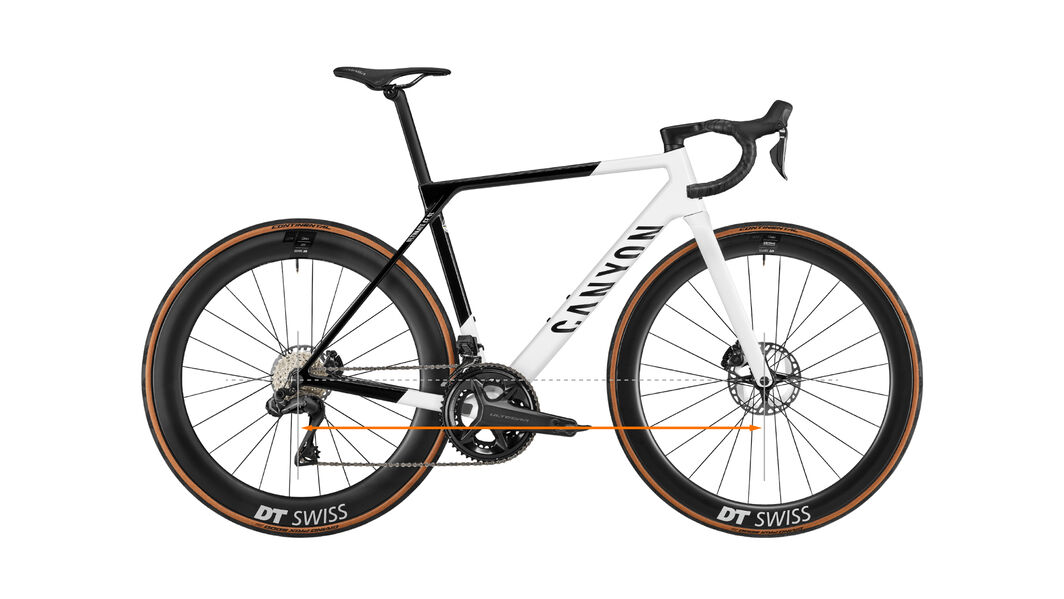
Wheelbase
The wheelbase is the distance between the hubs of both wheels. The longer the wheelbase, the more stable the ride. The Canyon Ultimate has a wheelbase of 1004 mm (size L) and will produce a more responsive ride than the Canyon Grizl, which has a wheelbase of 1050 mm (size L).
There's also an obvious wheelbase difference between road bikes and mountain bikes with the latter having a noticeably longer wheelbase for gnarly off-road riding.
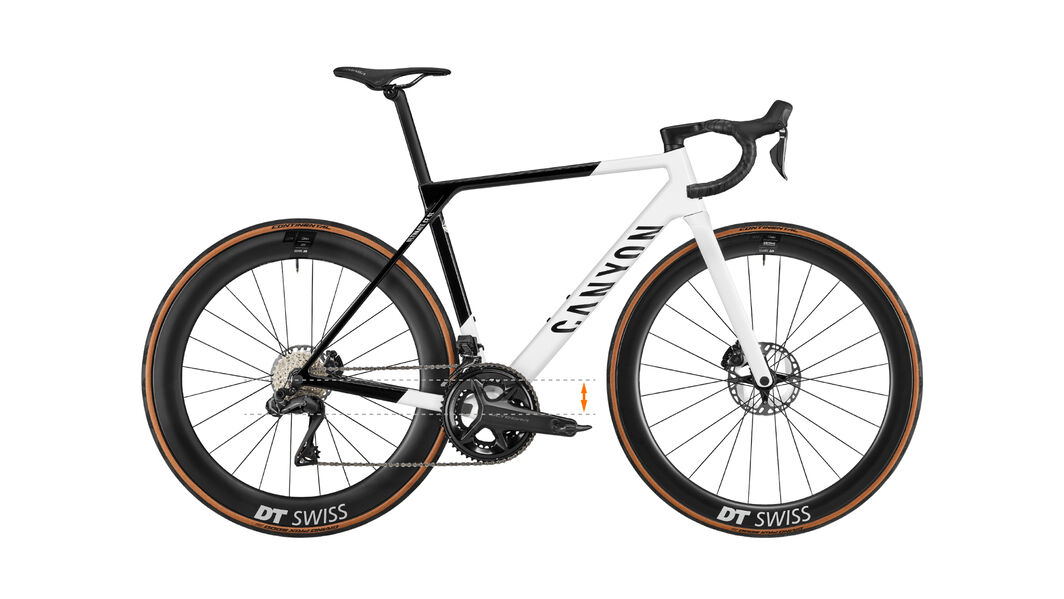
Bottom bracket offset
Sometimes referred to as the 'bottom bracket drop' this particular measurement is handy for figuring out a bike's stability.
The bottom bracket offset is the distance between the horizontal line of the bottom bracket and the horizontal line between the wheel hubs.
A bigger offset means the bike has a lower centre of gravity. Cyclocross bikes, like the Canyon Inflite, have a lower offset number than an Canyon Aeroad because of the obstacles it must face on the course.
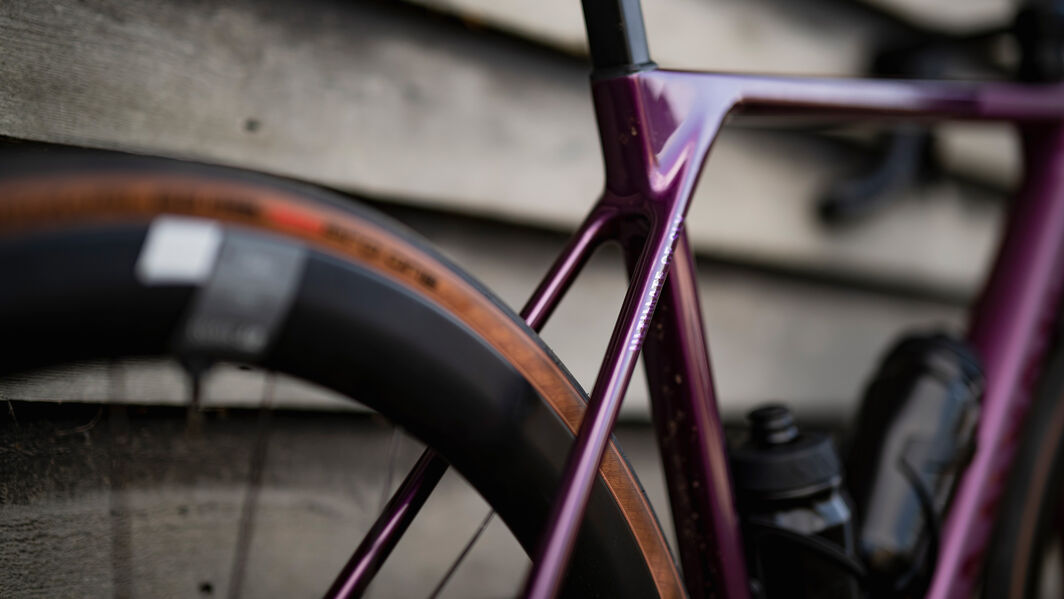
Tyre clearance
Tyre clearance isn't generally found on geometry charts, however it's an important consideration for anyone buying a bike. Not only will it tell you which tyres are compatible with your bike's frame and fork, but you'll know a bit more about its capabilities.
A bike with wider tyre clearance will be suitable for more off-road pursuits compared to one with narrower clearance. Wider tyres increase comfort but also increase the rolling resistance, so you'll need to find your ideal balance.
Wider tyres have become more common since bikes with disc brakes became more mainstream. Because designers are no longer limited by a brake caliper clamping the wheel’s rim.
Discover our Road Bikes
Did this article help?
Thank you for your feedback






